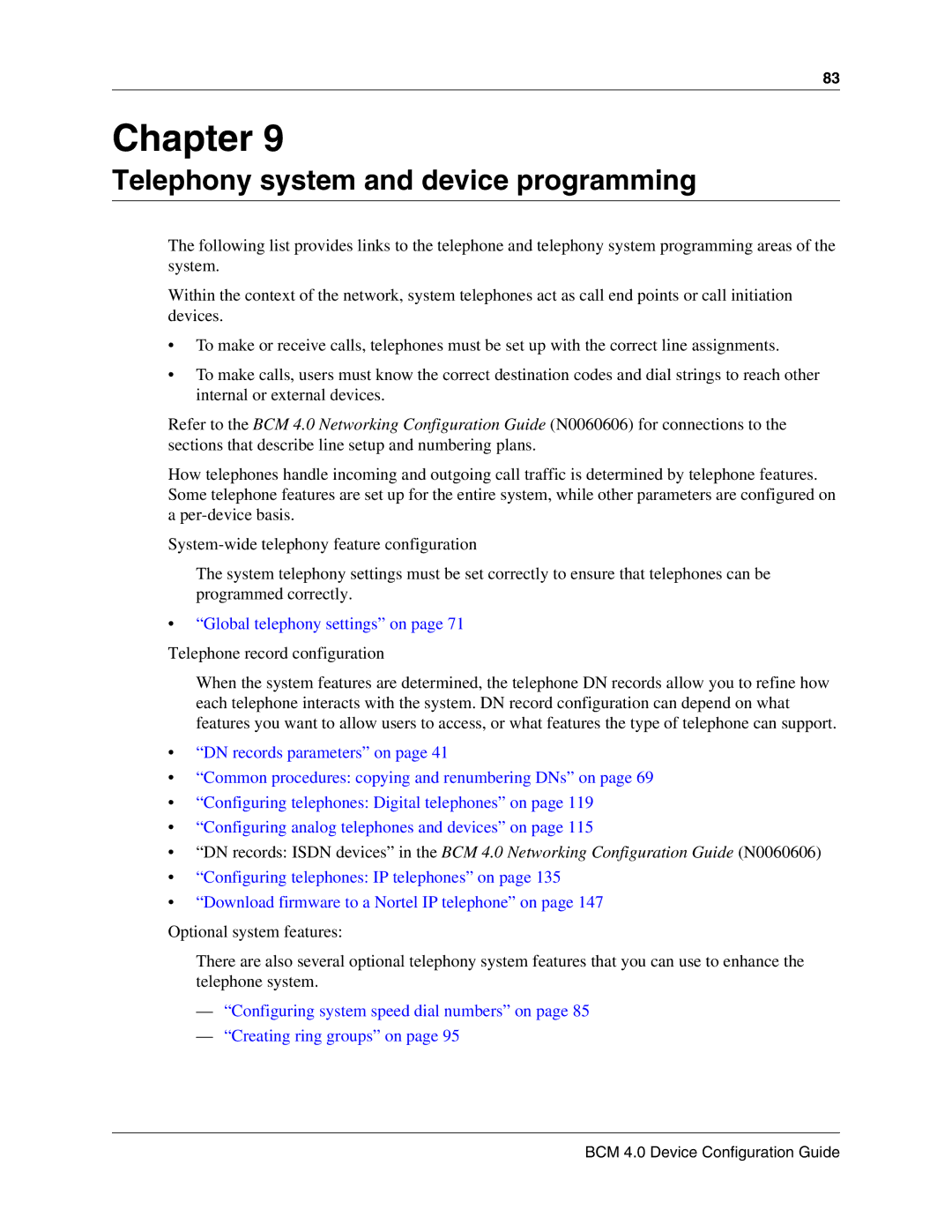
83
Chapter 9
Telephony system and device programming
The following list provides links to the telephone and telephony system programming areas of the system.
Within the context of the network, system telephones act as call end points or call initiation devices.
•To make or receive calls, telephones must be set up with the correct line assignments.
•To make calls, users must know the correct destination codes and dial strings to reach other internal or external devices.
Refer to the BCM 4.0 Networking Configuration Guide (N0060606) for connections to the sections that describe line setup and numbering plans.
How telephones handle incoming and outgoing call traffic is determined by telephone features. Some telephone features are set up for the entire system, while other parameters are configured on a
The system telephony settings must be set correctly to ensure that telephones can be programmed correctly.
•“Global telephony settings” on page 71 Telephone record configuration
When the system features are determined, the telephone DN records allow you to refine how each telephone interacts with the system. DN record configuration can depend on what features you want to allow users to access, or what features the type of telephone can support.
•“DN records parameters” on page 41
•“Common procedures: copying and renumbering DNs” on page 69
•“Configuring telephones: Digital telephones” on page 119
•“Configuring analog telephones and devices” on page 115
•“DN records: ISDN devices” in the BCM 4.0 Networking Configuration Guide (N0060606)
•“Configuring telephones: IP telephones” on page 135
•“Download firmware to a Nortel IP telephone” on page 147
Optional system features:
There are also several optional telephony system features that you can use to enhance the telephone system.
—“Configuring system speed dial numbers” on page 85
—“Creating ring groups” on page 95
